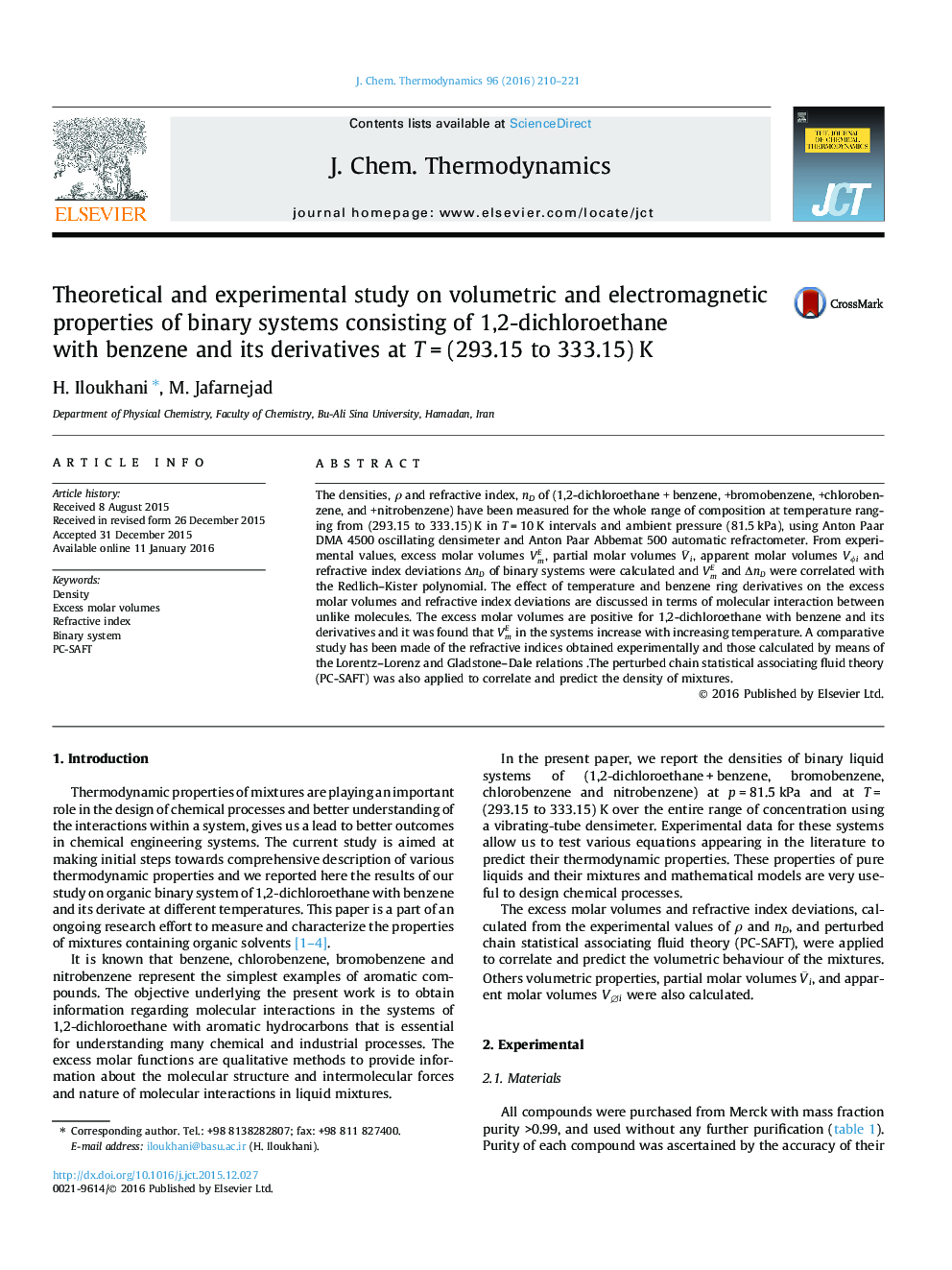| Article ID | Journal | Published Year | Pages | File Type |
|---|---|---|---|---|
| 215082 | The Journal of Chemical Thermodynamics | 2016 | 12 Pages |
•Excess molar volume and Refractive index deviations of binary systems of 1,2-dichloroethane with benzene and its derivatives were determined.•Excess molar volume and Refractive index deviations were correlated by using the Redlich–Kister equation.•The PC-SAFT was applied to correlate and predict the density of mixtures.
The densities, ρ and refractive index, nD of (1,2-dichloroethane + benzene, +bromobenzene, +chlorobenzene, and +nitrobenzene) have been measured for the whole range of composition at temperature ranging from (293.15 to 333.15) K in T = 10 K intervals and ambient pressure (81.5 kPa), using Anton Paar DMA 4500 oscillating densimeter and Anton Paar Abbemat 500 automatic refractometer. From experimental values, excess molar volumes VmE, partial molar volumes V¯i, apparent molar volumes VϕiVϕi and refractive index deviations ΔnDΔnD of binary systems were calculated and VmE and ΔnDΔnD were correlated with the Redlich–Kister polynomial. The effect of temperature and benzene ring derivatives on the excess molar volumes and refractive index deviations are discussed in terms of molecular interaction between unlike molecules. The excess molar volumes are positive for 1,2-dichloroethane with benzene and its derivatives and it was found that VmE in the systems increase with increasing temperature. A comparative study has been made of the refractive indices obtained experimentally and those calculated by means of the Lorentz–Lorenz and Gladstone–Dale relations .The perturbed chain statistical associating fluid theory (PC-SAFT) was also applied to correlate and predict the density of mixtures.
